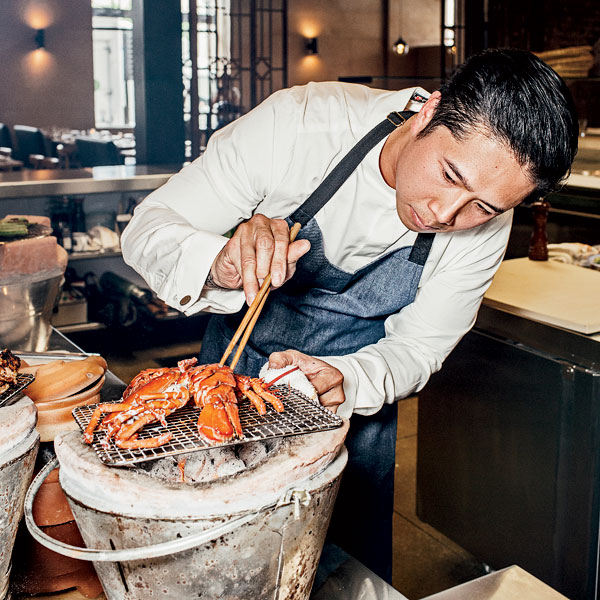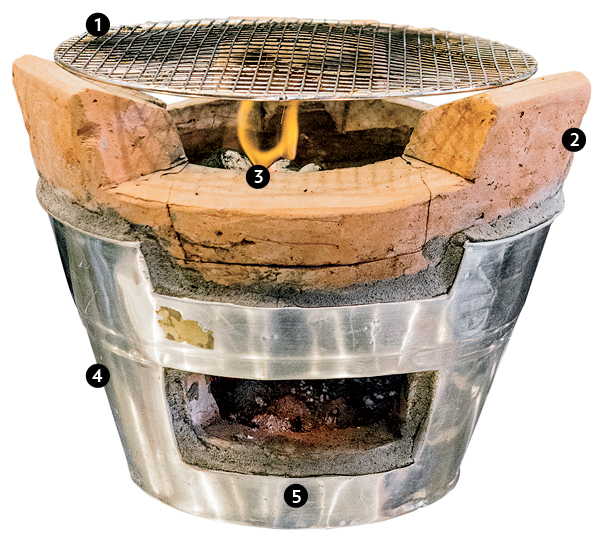
Thai Dang knew that the only way he could replicate his favorite style of Vietnamese street food at HaiSous, his new restaurant in Pilsen (and his first since being pushed out of the beloved yet scandal-plagued Embeya), was to get his equipment straight from the source. So he commissioned a family of artisans in Vietnam’s Dong Nai Province to make 20 lo dat—traditional charcoal-fired clay pots—in varying sizes for his kitchen, plus dozens of petite tabletop versions to be used as serving dishes.
The personal touches at HaiSous don’t stop there. Dang’s relatives in Vietnam built the tables, chairs, and stools (his uncle owns a furniture business), and the chef and his wife, Danielle, a designer, made three trips to Vietnam to procure plates and other finishing accents.
Lo dat cookery is primitive but versatile, and it’s not seen much outside of Southeast Asia, says Dang. During the construction of HaiSous, he posted a photo of a few pots on Instagram with this caption: “I’ll give you $100 if you see these used anywhere in the United States.” He kept his hundred bucks.

Dang trained his kitchen team for weeks in the art of cooking with the pots, which are used at the restaurant to grill meats, slow-dry shrimp, braise fish, and fire up pans for crispy crepes called banh xeo. The pot can radiate the gentle heat of a Dutch oven, ideal for low and slow cooking. For more heat, cooks stoke the fire near the bottom of the pot with a bamboo fan. With the pot at full throttle, a rib eye sears in minutes.
Like a cast-iron skillet, the clay pot gets better with use, and it yields incomparable flavor, says Dang, who fondly recalls the feasts of his youth, for which his mom served as grill master. “When the fat drips down and hits the charcoal, it gets smoky, and that smoke imparts more flavor,” he says.
One clay pot specialty is tho nuong chao: whole rabbit marinated overnight with garlic, fermented tofu, and chilies. Once off the grill, the meat needs only a few lively condiments: a squeeze of lime juice, some lime leaf, thinly sliced chilies, and a mix of salt and crushed roasted sesame seeds. Dang says it’s exactly like what he used to eat growing up. “We wanted people to feel like they just stepped into Vietnam.” 1800 S. Carpenter St.
Anatomy of a Lo Dat

1. Cooks sear meat and veggies on a grate. The grate can be removed and a wok placed instead over the open flame.
2. The unglazed clay acquires seasoning over time.
3. Charcoal fills the top half; ashes fall through holes to the bottom.
4. A metal covering keeps the clay from cracking when the pot is moved.
5. An opening near the bottom allows cooks to fan the flames for higher heat.


